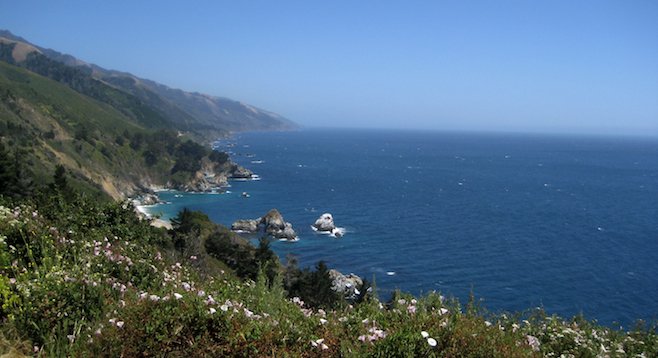 Facebook
Facebook
 X
X
 Instagram
Instagram
 TikTok
TikTok
 Youtube
Youtube

Undeniably one of the most picturesque roads you’ll ever traverse, California’s Route 1 north of Santa Barbara is a largely contiguous strip of undeveloped coastline with endless, arresting views. (“Undeveloped,” as in not much there other than the road you’re driving on.)
I’ve traveled around most of the periphery of this country, and there isn’t anything quite like Route 1 in any other state. Coastal property is big business; much of the country’s new development is occurring in oceanfront communities. Yet not here. Not now. Not ever.
Each year, thousands of motorists drive at least a portion of the ultra-scenic Pacific Coast Highway (PCH). With more than 1,000 miles of coastline and with more residents than any other state in the country, California’s move to preserve at least half its shores in perpetuity is beyond commendable.
Approximately 280 miles along the Pacific are preserved in state parkland, and the feds placed huge hunks of shoreline into conservation from Point Reyes National Seashore to the Redwood National and State Parks. With most of the state’s highways laid inland on the eastern side of the coastal mountain ranges that run parallel with the ocean, mile after sun-drenched coastal mile has been left to this two-lane, shoulder-less winding road. Hallelujah.
Construction of the now-655-mile California Route 1 started, not surprisingly, from San Simeon (Hearst Castle) to Carmel in the early 1920s. Although not the first or only castle to have been built along Route 1, it’s certainly the most opulent. (Not the first time money begot money and spurred action in D.C.)
As I perched precariously on the edge of an un-barricaded cliff along the rugged coastline staring out towards Japan in hopes of spying a whale’s blow spout, I felt a sense of rightness not afforded along just every stretch of highway, scenic or otherwise. Driving California’s Coastal Highway is good for the soul.


Undeniably one of the most picturesque roads you’ll ever traverse, California’s Route 1 north of Santa Barbara is a largely contiguous strip of undeveloped coastline with endless, arresting views. (“Undeveloped,” as in not much there other than the road you’re driving on.)
I’ve traveled around most of the periphery of this country, and there isn’t anything quite like Route 1 in any other state. Coastal property is big business; much of the country’s new development is occurring in oceanfront communities. Yet not here. Not now. Not ever.
Each year, thousands of motorists drive at least a portion of the ultra-scenic Pacific Coast Highway (PCH). With more than 1,000 miles of coastline and with more residents than any other state in the country, California’s move to preserve at least half its shores in perpetuity is beyond commendable.
Approximately 280 miles along the Pacific are preserved in state parkland, and the feds placed huge hunks of shoreline into conservation from Point Reyes National Seashore to the Redwood National and State Parks. With most of the state’s highways laid inland on the eastern side of the coastal mountain ranges that run parallel with the ocean, mile after sun-drenched coastal mile has been left to this two-lane, shoulder-less winding road. Hallelujah.
Construction of the now-655-mile California Route 1 started, not surprisingly, from San Simeon (Hearst Castle) to Carmel in the early 1920s. Although not the first or only castle to have been built along Route 1, it’s certainly the most opulent. (Not the first time money begot money and spurred action in D.C.)
As I perched precariously on the edge of an un-barricaded cliff along the rugged coastline staring out towards Japan in hopes of spying a whale’s blow spout, I felt a sense of rightness not afforded along just every stretch of highway, scenic or otherwise. Driving California’s Coastal Highway is good for the soul.
Comments